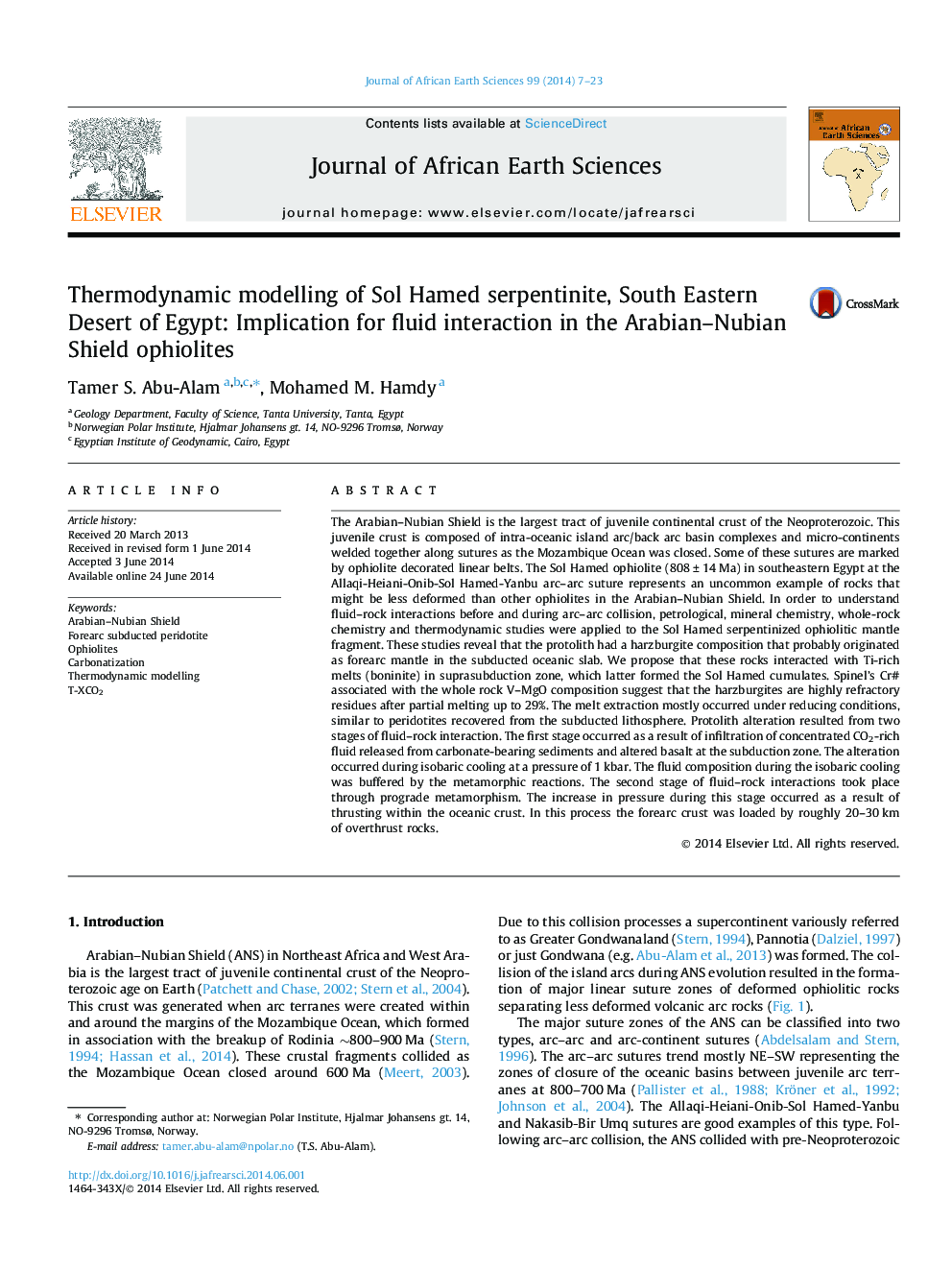| کد مقاله | کد نشریه | سال انتشار | مقاله انگلیسی | نسخه تمام متن |
|---|---|---|---|---|
| 4728799 | 1356471 | 2014 | 17 صفحه PDF | دانلود رایگان |
• The Sol Hamed ophiolites achieved two stages of fluid–rock interaction.
• First stage is due to infiltration of CO2-rich fluid during isobaric cooling.
• The fluid composition during the first stage was buffered by the metamorphic reactions.
• Second stage of fluid–rock interactions took place through prograde metamorphism.
• The second stage of fluid–rock interaction occurred under extensive duplex array and thrusting of the oceanic crust.
The Arabian–Nubian Shield is the largest tract of juvenile continental crust of the Neoproterozoic. This juvenile crust is composed of intra-oceanic island arc/back arc basin complexes and micro-continents welded together along sutures as the Mozambique Ocean was closed. Some of these sutures are marked by ophiolite decorated linear belts. The Sol Hamed ophiolite (808 ± 14 Ma) in southeastern Egypt at the Allaqi-Heiani-Onib-Sol Hamed-Yanbu arc–arc suture represents an uncommon example of rocks that might be less deformed than other ophiolites in the Arabian–Nubian Shield. In order to understand fluid–rock interactions before and during arc–arc collision, petrological, mineral chemistry, whole-rock chemistry and thermodynamic studies were applied to the Sol Hamed serpentinized ophiolitic mantle fragment. These studies reveal that the protolith had a harzburgite composition that probably originated as forearc mantle in the subducted oceanic slab. We propose that these rocks interacted with Ti-rich melts (boninite) in suprasubduction zone, which latter formed the Sol Hamed cumulates. Spinel’s Cr# associated with the whole rock V–MgO composition suggest that the harzburgites are highly refractory residues after partial melting up to 29%. The melt extraction mostly occurred under reducing conditions, similar to peridotites recovered from the subducted lithosphere. Protolith alteration resulted from two stages of fluid–rock interaction. The first stage occurred as a result of infiltration of concentrated CO2-rich fluid released from carbonate-bearing sediments and altered basalt at the subduction zone. The alteration occurred during isobaric cooling at a pressure of 1 kbar. The fluid composition during the isobaric cooling was buffered by the metamorphic reactions. The second stage of fluid–rock interactions took place through prograde metamorphism. The increase in pressure during this stage occurred as a result of thrusting within the oceanic crust. In this process the forearc crust was loaded by roughly 20–30 km of overthrust rocks.
Journal: Journal of African Earth Sciences - Volume 99, Part 1, November 2014, Pages 7–23
